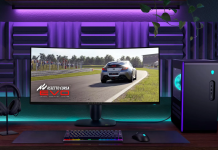Huawei Technologies Australia’s chief technology officer David Soldani has given his scathing assessment of the National Broadband Network, and the Australian Government’s management of the shambolic technology project.
Mr Soldani labelled the network (and the $51 billion dollars spent on the project) as a catastrophe, and slammed the performance of the network that, despite the huge investment, couldn’t even deliver modest speeds to more than 1 million Australians.
In a post on Huawei’s website, Soldani said:
“Australia has somehow managed to invest $51 billion on a network that can’t even deliver 50Mbps to around one million of its fixed-broadband end-user premises,” the post claims, listing 200,000 homes on fibre-to-the-node technology that cannot get 25Mbps speeds.
“The NBN project has failed and Australia needs to stop expecting NBN Co to deliver high-speed broadband to all Australians – it is just not going to happen.”
Some may see this as a case of sour grapes from Huawei, which was banned from participating in the NBN years ago, and more recently from participating in 5G network builds in Australia. However, looking at the state of the NBN, it’s hard to disagree with his comments.
The performance of NBN’s Fixed Wireless network was targeted in particular:
“The incredible truth of the matter – and this takes some believing – is that in hundreds of cell sites across the country the NBN fixed wireless network is now delivering only around 6Mbps to each end-user premises at peak-time,” he said.
6Mbps speeds, in 2019, are absolutely appalling. In many countries around the world, gigabit fibre is broadly available, and offers speeds as much as 150 times faster than these woeful NBN speeds.
The continued mismanagement of the NBN rollout has been felt by customers across the country, with a second-rate FTTN network delivering appalling speeds to many customers, and countless others having build dates pushed further and further back.
You may have followed my own journey to the NBN, which was promised when we moved in two years ago, and after delay and delay, we approached a June 2019 ready for service date … only to be told that further build was required, and then a delay to January 2020.
Regardless of Huawei’s situation at the moment, the company has a point; in feedback we’ve seen on previous NBN stories, there’s lots of unhappy customers, with lots of conversation about whether the original promise of the NBN has been met (or can even be met). Sadly it almost feels like we’ve been sold a lemon.




